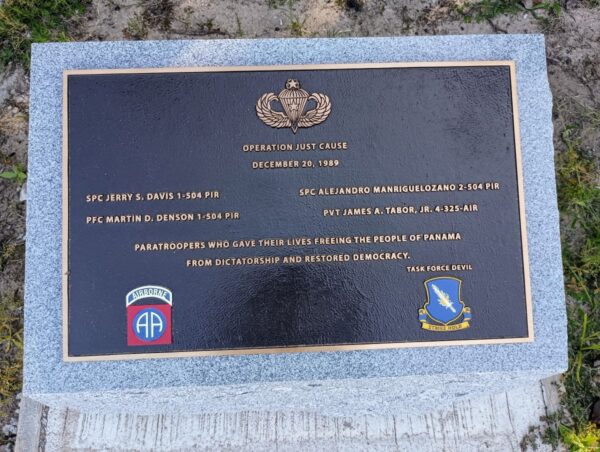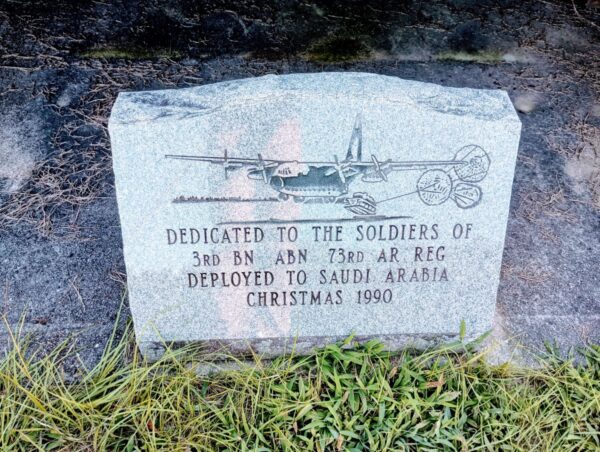Memorials, Airparks, & Galleries
Begin your visit on the seven-acres of Museum grounds.
Memorials
Tour the Museum Memorials to see All-American Soldiers service & sacrifice in our Nations wars, conflicts, and peacetime engagements.
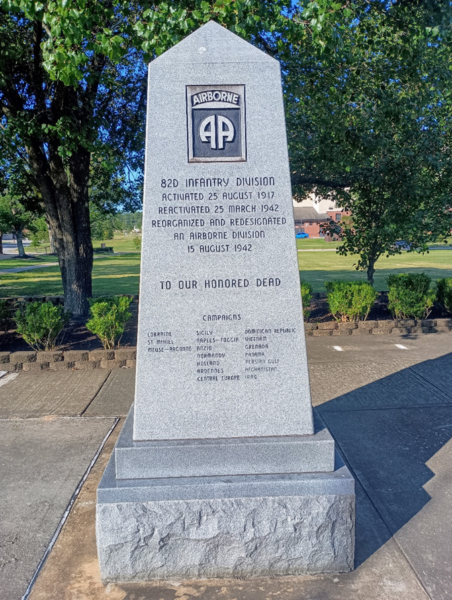
82nd Airborne Division Granite Pillar Campaign Memorial 1917 to Present Day. Every year during All American Week, the 82nd Airborne Division Command Group, Brigade Command Groups, 82nd Airborne Division Association, and Parachute/Airborne Infantry Regimental Associations commemorate the sacrifice of All-American Soldiers in our Nations wars and conflicts.
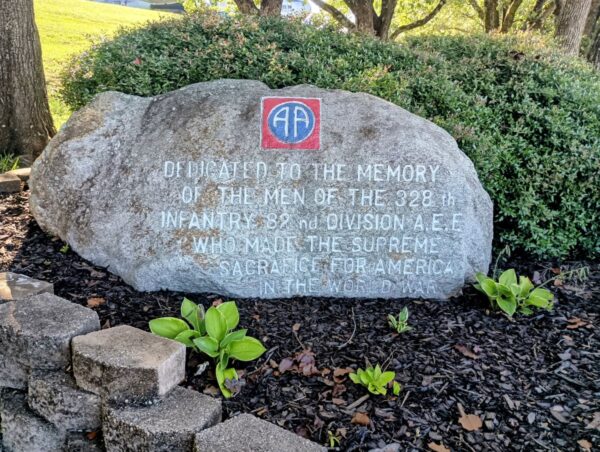
WWI Stone Memorial 328th Infantry, 82nd Division, 1917. This war memorial is a gray rock, approximately six feet long by three feet wide by 3 feet high. The front face of the rock bears a red, white, and blue painted engraving of the “AA” (“All-American”) insignia from the shoulder patch of the 82nd Airborne Division. Beneath the insignia, the stone is engraved to honor the sacrifice of the 328th Infantry regiment in World War I. The memorial was first found at Camp Gordon in Georgia, the World War I home of the division. When dedicated in 1933, a history of the 82nd Division, newspaper clippings about the 82nd, French and British coins and a Memorial Penny of the 82nd Division had been placed into the memorial’s base. The stone was moved to Fort Bragg in 1959 when Naval Air Station Atlanta on the site of Camp Gordon Closed.
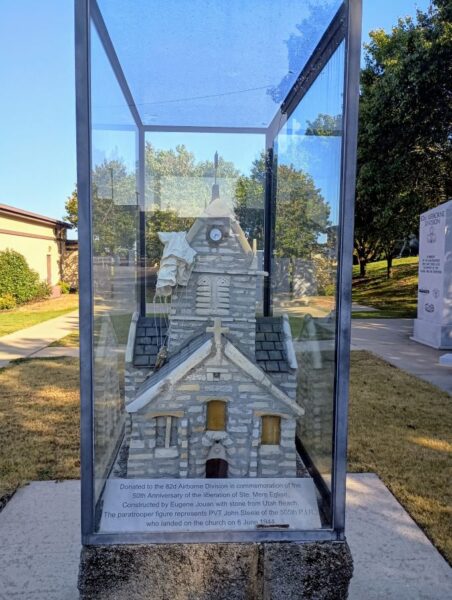
WWII Glass Encased Memorial, 505th PIR Parachute Assault, Ste Mere Eglise, Normandy, France, Operation Overlord, 6 June 1944. Eugene Jouan a French artist who was seventeen at the time of the invasion, constructed the memorial out of stone from Utah Beach in 1994. This is the Church at Ste Mere Eglise showing John Steel stuck on the bell tower.
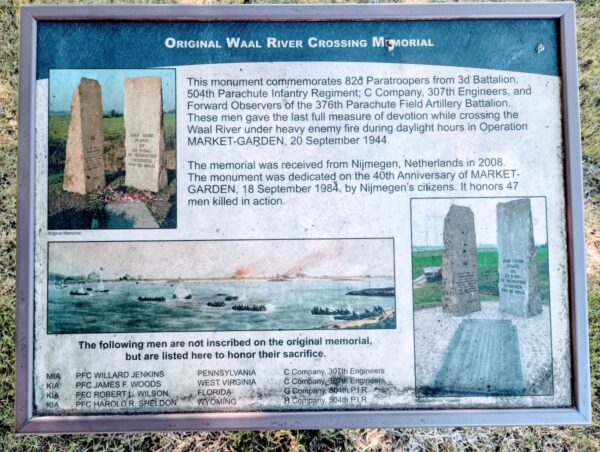
WWII Memorial Plaque, 3/504th PIR, C/307th EN, 376th PFAB, Waal River Crossing, Nijmegen Netherlands, Operation Market Garden, 20 September 1944. The citizen of Nijmegen, Netherlands erected the Waal River Crossing Memorial on September 18, 1984. The memorial commemorated the forty anniversaries of Operation Market Garden. It commemorates the Waal‐crossing by the 82d Airborne Division’s 3d Battalion 504th Parachute Infantry Regiment, C Company 307th Airborne Engineer and forward observers from the 376 Parachute Field Artillery Battalion. This stone has the names of the forty-seven American soldiers were killed during this operation. This stone has three misspelled names, and one soldier not listed. The Dutch corrected with a new memorial and the original was presented to the 82d Airborne Division.
.

WWII Granite Slab Memorial 504th PIR, Waal River Crossing, Nijmegen Netherlands, Operation Market Garden, 1944

Vietnam War Glass Encased Granite Memorial, Golden Brigade, Tet Offensive, Republic of Vietnam, 1969. “The Golden Brigade” (3d Brigade, 82d Airborne Division) deployed to Vietnam on 14 February 1968. They fought hard for 22 months and redeployed to Fort Bragg in December 1969. Once home, the Veterans of the brigade raised funds to build a memorial to honor their fallen brothers in arms. The memorial found a home at the 82d Airborne Division Museum, Ardennes Street, Fort Bragg.
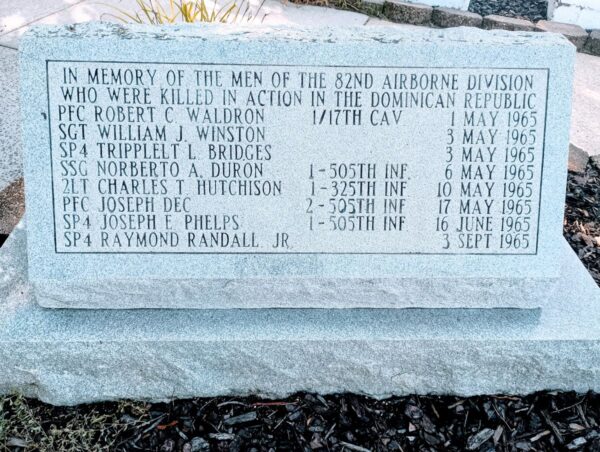
Dominican Republic Granite Block Memorial, 1/325th INF, 2/325th INF, 1/505th INF, May – September 1965. This Memorial honors the thirteen paratroopers were killed in action.
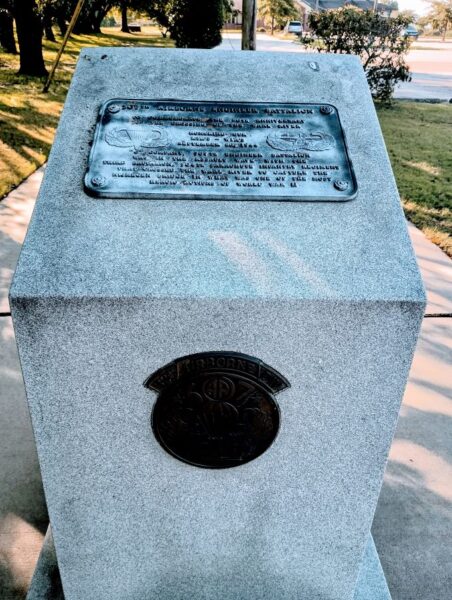
307th Engineer Battalion Memorial. This memorial marker consists of a small granite stele approximately four feet tall by two feet wide with two metal plaques, made from bronze. A rectangular plaque with the commemoration is affixed to the top of the angled front face, and the lower, vertical part of the front has a metal medallion with the image of the insignia of the 307th Airborne Engineer Battalion. The inscription is framed on the left by an image of the United States Army Airborne Patch and on the right by an image of the United States Army Glider Patch. Directly behind the monument and mounted to the paved foundation is a rectangular marble plaque approximately five feet long by two feet wide. Commemorating the historic crossing of the River Waal in Nijmegen, The Netherlands, this plaque was originally found at the site of the river crossing and given by gift to the 82nd Airborne by the citizens of Nijmegen. .

GWOT, OEF/Afghanistan & OIF/Iraq, Granite Tower, Pillars, and Block Memorial 82nd Airborne Division 2003 – 2021. This granite memorial honors the 82nd Airborne Division paratroopers who sacrificed their lives in the global war on terrorism. The memorial is composed of a wide smooth obelisk of light granite, eleven feet high and weighing thirteen tons, resting on a two-tier granite base. The four sides are inscribed, the front with a general commemoration and the sides with the names of service personnel. The commemorative site has expanded to include a low granite wall behind the obelisk to include the names of more service personnel as time goes on. The front face of the column also includes the inscribed images of four of the insignia of the 82nd Airborne. Ceremonies have been held each year at the site. The site has become solemn ground for the families of those serving and who have lost their lives in military service.
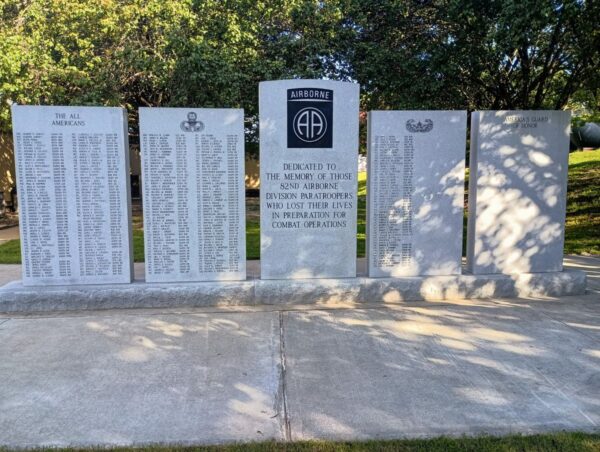
Preparation for Combat Operations Granite Tower Memorial, 1917 to Present Day. This memorial honors the four hundred Soldiers who have died in training accidents preparing for Combat. It currently has three hundred names. The museum is researching known incidents to document other Soldiers. We invite the public to send names the museum for inclusion on the memorial, most of the missing names are from 1946-1975 period. The 82d Airborne Division conduct an annual Ceremonies at the site just before Memorial Day.
Airpark
Tour the Museum Airborne Airpark and see aircraft All American Paratroopers jumped out off and into history since World War II.
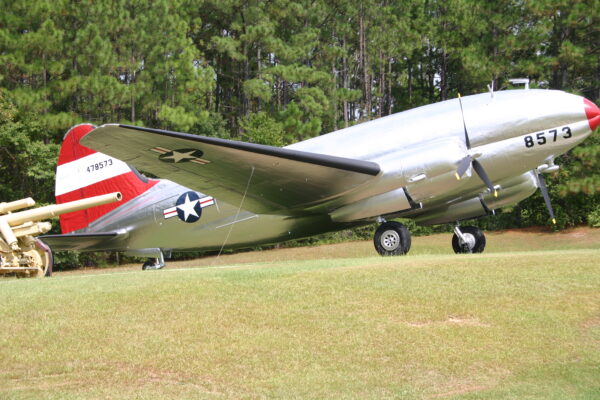
C46F Commando. Designed in 1936 and built by the Curtis-Wright Corporation, production began in 1940 and ran until 1944 with 3,140 produced in World War II. The “D” Model would be the first twin cargo door transport aircraft used by the military for airborne operations. Nicknames for the C-46 include the Whale and Dumbo. The 82nd Airborne Division used the aircraft to maintain jump proficiency in the 1950s.
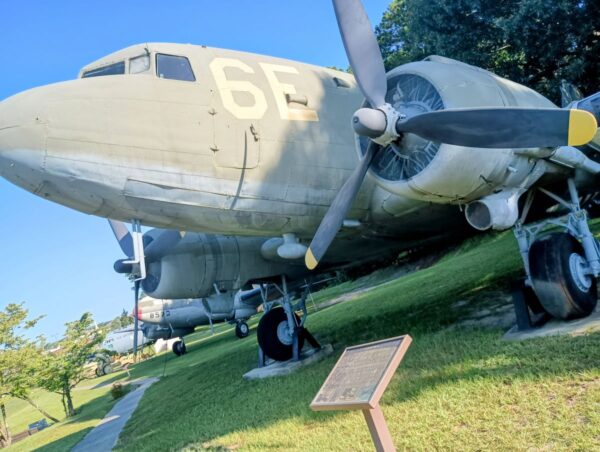
C47B SkyTrain. Developed in the early 1930s and manufactured by Douglas Aircraft Company. The C-47 could carry up to 6,000 pounds of cargo to include a quarter-ton truck (Jeep) and trailer, or 37mm anti-tank gun. Port-side doors were modified into three pieces to be removed for loading and unloading of equipment. Ramps were used to manually load the gear into the aircraft.
The C-47 carried twenty-eight fully equipped Airborne Division Paratroopers into combat during WWII. The C-47 also transported the CG-4A Waco and Horsa gliders to combat, the tail cone was removed and retrofitted with a reinforced glider-towing hook. The Gliders carried a variety of cargo to include quarter-ton trucks, quarter-ton trailers, pack howitzers, or thirteen fully equipped 82nd Airborne Division Glider Troopers and equipment.
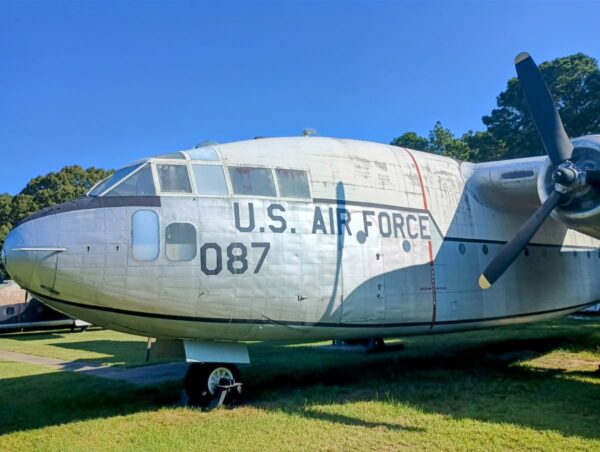
C119L Flying Boxcar. Developed in 1948 and manufactured by Fairchild Engine and Airplane Corporation. The C-119 was a true transport of personnel and equipment. The inspiration for the aircraft came from the C-82 Packet, an earlier version of The Flying Boxcar. Improvements in aircraft engineering and engine development allowed the C-119 to have a longer and wider cargo bay with new cargo handling systems to include winches and floor rollers, better forward visibility for the pilots, and a larger wingspan and area. The 82nd Airborne Division used the aircraft from 1948 until the early 1960s..
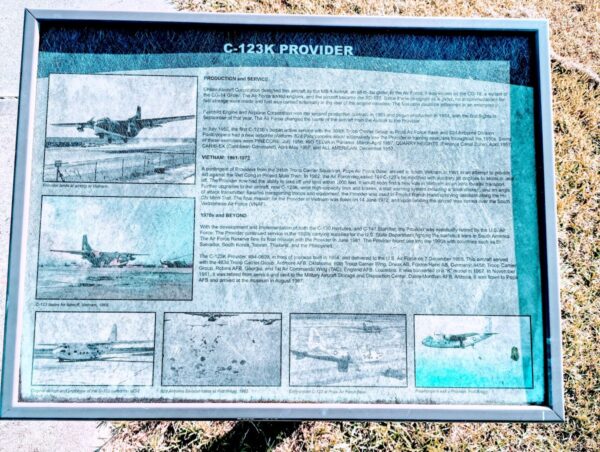
C123K Provider. Developed in the 1950s, Chase Aircraft designed this aircraft as the MS-8 Avitruk, an all-metal glider. In the Air Force, it was known as the CG-18 a variant of the CG-14 Glider. The Air Force added engines, and the aircraft became the XC-123. Since it was designed as a glider no accommodations for fuel storage were made and fuel was carried externally and could be jettisoned in an emergency. 82nd Airborne Division used the aircraft extensively in the 1950s through 1970s..
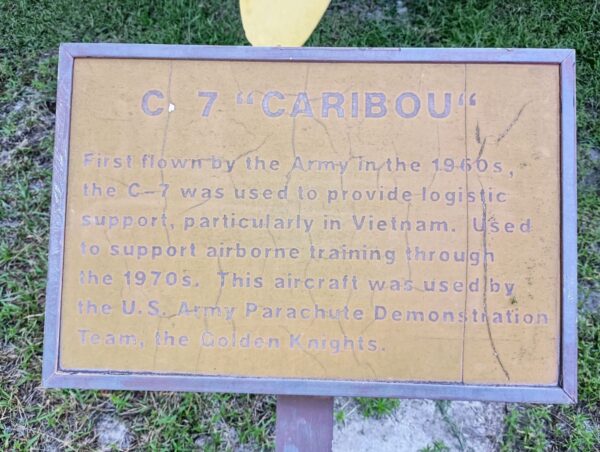
C7 Caribou. Developed in the 1960s, De Havilland Aircraft designed this aircraft as a twin-engine, short takeoff and landing utility transport. The C7 was used primarily for tactical airlift missions from short, unimproved airstrips in forward battle areas.The 82nd Airborne Division used the aircraft to support airborne training from the 1960s to 1970s.
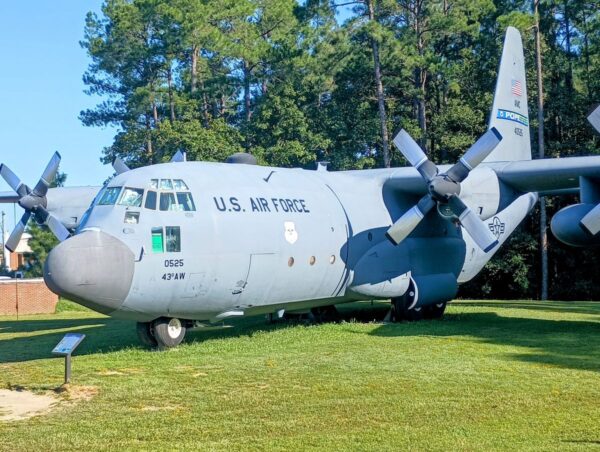
C130E Hercules. Developed in the 1950s, Lockhead-Martin designed and built the C-130 with the following general operating requirements the aircraft must be able to complete: (1) resupply mission with a payload of 37,800 pounds carries 950 nautical miles (NM) and return without refueling, (2) airhead mission resupply troops in a combat zone with 25,000 pounds of payload for 1,100 NM at high speed and return without refueling, (3) troop carrier mission to include 92 combat -equipped Infantrymen or 64 Paratroopers, and (4) logistic support mission with a payload of 37,800 pounds carried for 1,700 NM. 82nd Airborne Division Paratrooper used the aircraft in the 1950s to present day.
Gallery
Walk the Museum concourse see the galleries & exhibits of the All-American Division’s history in our Nations wars, operations, and peacetime engagements.
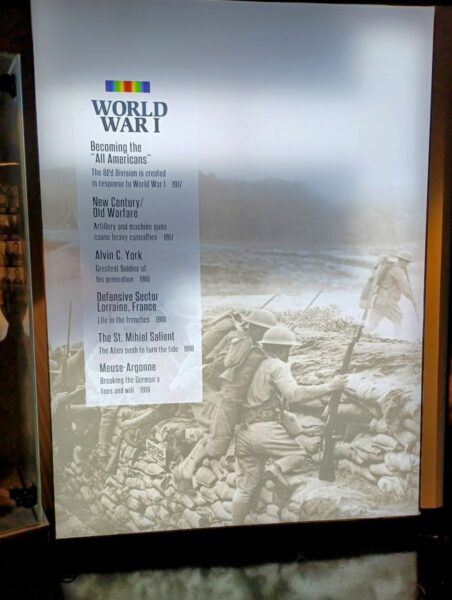
WWI Gallery, 1971 – 1918. This gallery covers the Division’s origins. Training and story of the All-American name, deployment to England, and combat in France. Learn the story of the Division’s two Medal of Honor recipients: SGT Alvin York and LTC Emory Pike. Walk & scan the in-gallery QR code to search WWI Digital Archives on your personal device. Read WWI Era All-American Soldier stories, see photos of their service, and video of their combat operations.
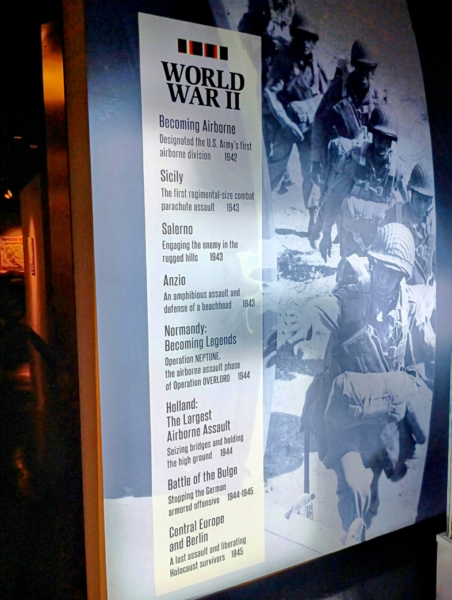
WWII Gallery, 1942 – 1945. Learn the Division’s story of becoming the first U.S. Army Airborne Division. Follow the Division’s path thru North Africa, Italy, Ireland, England, France, Holland, Belgium, and Germany. Walk & scan the in-gallery QR code to search WWII Digital Archives on your personal device. Read WWII Era All-American Soldier stories, see photos of their service, video of the Division’s combat jumps, stopping the Nazi advance in the Bulge, occupation duty in Germany, and tag line as America’s Guard of Honor.
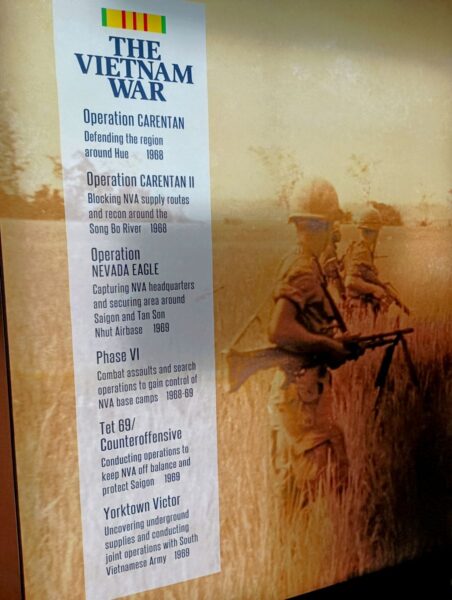
Vietnam Gallery, 1968 – 1969. Learn how the Golden Brigade was alerted, mobilized, deployed to the Republic of Vietnam, and fought in six major operations. Walk & scan the in-gallery QR code to search the Vietnam Archives on your personal device. Read Vietnam Era All-American Soldier stories, see photos of their service, and video of their combat operations.
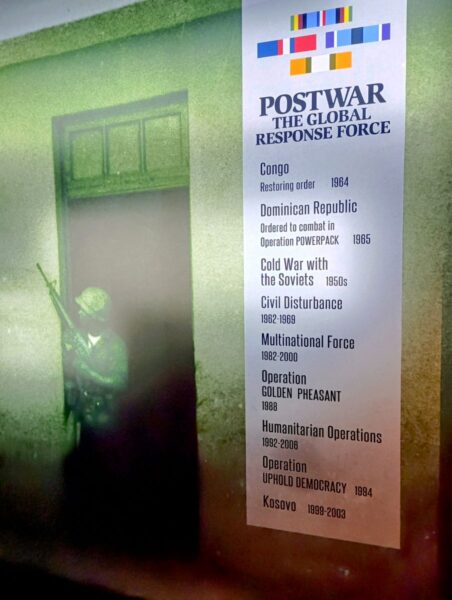
Global Response Force Gallery, 1964 – 2003. Learn how the Division earned the title as the Nation’s 911 Combat Force by deploying in response to crisis in Africa, Dominican Republic, Egypt, Honduras, Haiti, and the Continental United States. Walk & scan the in-gallery QR code to search the Global Response Force Archives on your personal device. Read Global Response Force Era All-American Soldier stories, see photos of their service, and video of their operations.
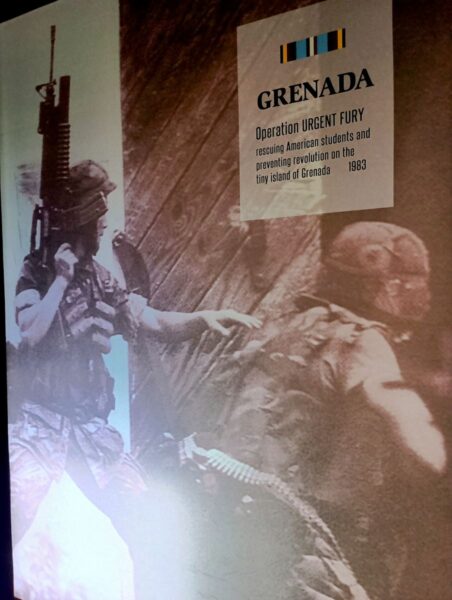
Grenada Gallery, 1983. Learn the story of how the Division alerted, marshalled, and deployed to Haiti during Operation Urgent Fury to rescue and evacuate U.S. citizens. Walk & scan the in-gallery QR code to search the Grenada Archives on your personal device. Read Grenada Era All-American Soldier stories, see photos of their service, and video of their combat operations.
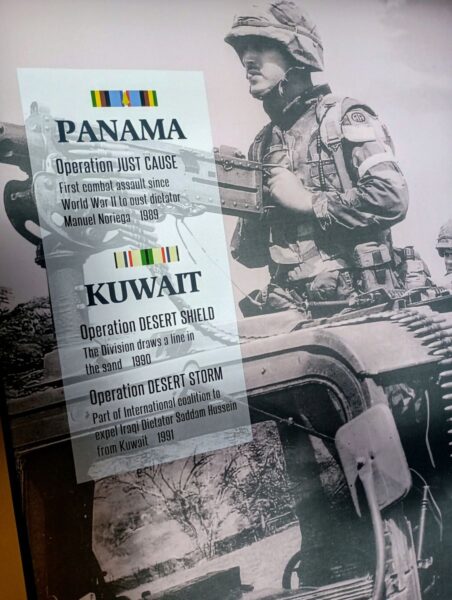
Panama & Gulf War Gallery, 1989 – 1991. Learn the story of how the Division conducted its first combat jump since World War II and the follow-on mission to oust dictator Manuel Noriega. Walk & scan the in-gallery QR code to search the Panama Archives on your personal device. Read Panama Era All-American Soldier stories, see photos of their service, and video of their combat operations.
Learn the story of how the Division conducted it first full-scale combat deployment since World War II to Saudi Arabia, conducted split-based operations with a brigade conducting combat operations in with French Forces, and the Division (-) conducting combat operations in Western Iraq. Walk & scan the in-gallery QR code to search the Gulf War Archives on your personal device. Read Gulf War Era All-American Soldier stories, see photos of their service, and video of their combat operations.
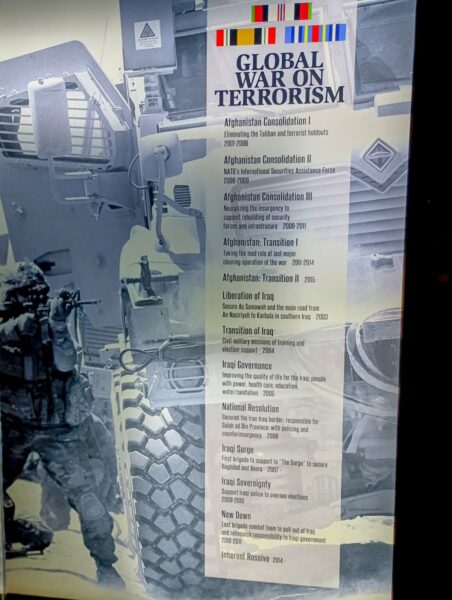
Global War on Terrorism Gallery, 2003 – 2017. Learn how the Division conducted split-based operations in Afghanistan, Iraq, and Fort Liberty. Learn how the All-Americans transition from Division full scale combat operations; to Brigade Combat Team counter-insurgency operations; to a Combat Division headquarters serving as a Combined, Joint, Interagency command post. Walk & scan the in-gallery QR code to search the GWOT Archives on your personal device. Read GWOT Era All-American Soldier stories, see photos of their service, and video of their combat operations.

